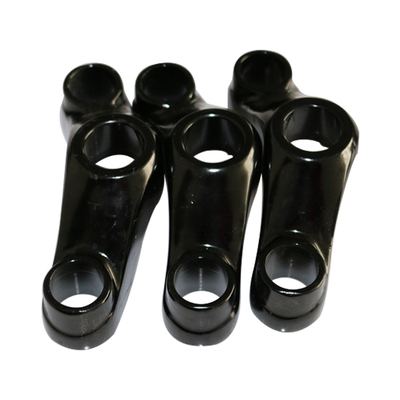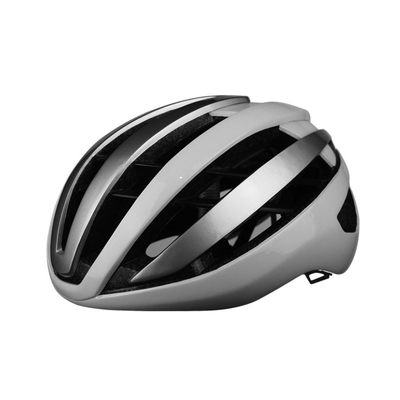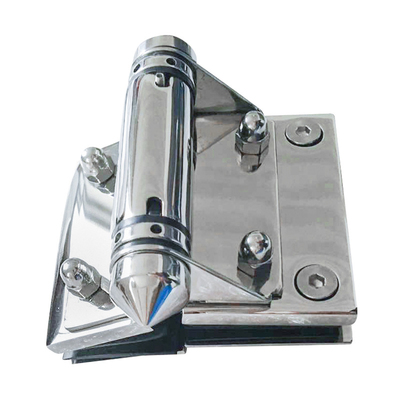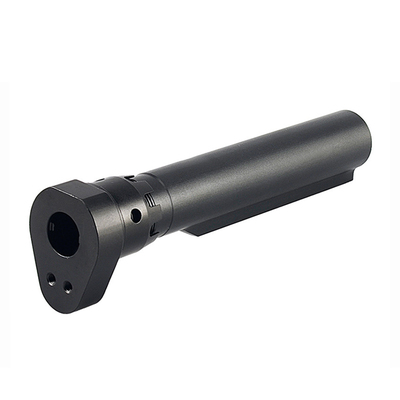What kind of lubrication technology should be used in the new generation of large die-casting machines?
As the automotive industry struggles to cope with the ever-changing market challenges, production processes are constantly evolving, using larger and more complex die-cast parts to create lighter cars. Dr. Mark Cross, Global Business Development Director of Quaker Houghton Die Casting, discussed how innovative lubrication technology supports the introduction of the latest generation of large-scale, over 4,500-ton die-casting machines to meet these challenges.
As countries around the world plan to reduce emissions and create greener and more sustainable transportation solutions, the automotive industry must do the same. The direct result of reducing emissions is the automotive industry's focus on "lightweight" new vehicles. Our goal is to reduce the overall weight of the vehicle to improve the fuel economy, cruising range and emissions of the growing number of hybrid and electric vehicles on our roads.
In order to reduce the overall weight of the vehicle, engineers are increasingly using a variety of materials and production techniques to manufacture lightweight components for powertrains, transmission systems and structural systems. This use of new materials-including aluminum, carbon fiber composites, high-strength steel, magnesium and titanium-has brought about a rethinking of traditional manufacturing and assembly processes and the need to adopt new technologies and processes.
Especially for die-casting parts, engineers must consider how to provide higher quality and productivity for large and complex parts. At the same time, production costs need to be reduced, total cost of ownership needs to be reduced, and the environmental impact of the die-casting process must be reduced.
Switch to larger die castings
The automotive industry is no stranger to automation, and many production lines have adopted Industry 4.0. In order to create smarter and more efficient production lines, physical and digital processes are becoming more and more closely linked. However, under pressure to combine production efficiency with the use of lighter materials, changes are taking place.
Die casting has always been a key manufacturing process in the automotive industry. Traditionally, this technology has been used to cast parts such as engine blocks and gearboxes. Today, this technology has been used to cast one-piece structural parts such as shock towers and torsion bars to achieve the ultimate goal of reducing weight.
California-based electric car manufacturer Tesla (Tesla) recently announced a change in its production method, which tends to use a single-piece die-cast underbody structure instead of a combination of multiple welded and stamped components. This requires the use of the world's largest die-casting machine, which can produce such a large one-piece casting, this change may completely change the automotive industry.
Die casting: weighing the pros and cons
The benefits of die casting in the automotive industry are well known. Die casting is a fast and relatively economical process that provides the repeatability required for mass production, allowing the same parts to be produced using one mold.
Moving from a smaller number of large die-cast parts rather than a large number of smaller parts to construction vehicle structures reduces production complexity and significantly reduces costs. Casting larger parts can remove as many as 70 steps from the more traditional production process. Although the benefits are obvious, the casting of larger parts introduces complexity to the die casting process. Here, innovative lubricants that are used with suitable equipment are needed.
Anhydrous lubricants: sustainable solutions for large and complex castings
To avoid reducing quality and increasing costs when manufacturing large and complex parts, specifying the correct mold lubricant technology is essential to ensure that a sufficient release lubricant film is formed on the mold surface.
As the size and complexity of molds increase, it becomes increasingly difficult to lubricate them with conventional water-based lubricant systems. Ensuring that lubricant reaches all parts of a complex tool to prevent casting failure is a major challenge that cannot be easily overcome.
The real challenge faced by die casting machines is the lack of lubricant sprays to penetrate into areas such as ribs and the low film-forming ability of water-based lubricants. In addition, the nozzles used to apply water-based lubricants are too large, cumbersome and inflexible to successfully distribute the lubricant to all areas of the mold surface.
For industries that want to cast larger parts and also face the challenges of maintaining product quality, increasing productivity, and reducing costs, anhydrous electrostatic lubricant systems (such as Quaker Houghton's Lubrolene) provide the best solution. This type of system combines a high-power release agent without the shortcomings of traditional lubricants, and combines a compact, low-weight spray system.
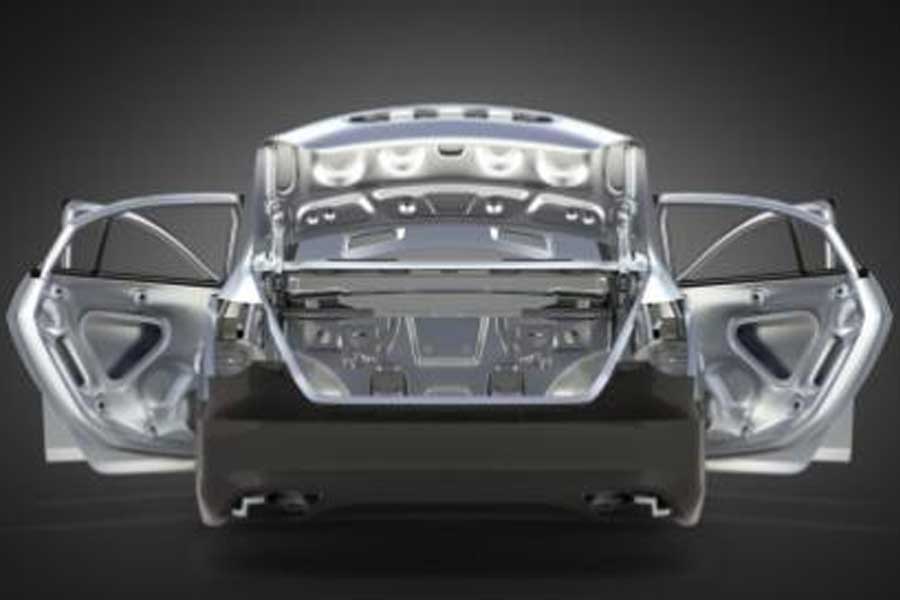
When Lubrolene WFR-EC is applied through a unique electrostatic spray gun, the lubricant spray drops will be electrostatically charged. When coupled with a grounded mold, it will produce excellent lubricant deposits in all areas of the mold.
This includes deep ribs and other recessed features, which are difficult to achieve with other mold lubricant technologies. The spray head is light in weight, small in footprint, and the control function of the application system means that the use of lubricant can be easily adjusted on the entire mold surface to obtain the best lubricating film.
Since the lubricant product is also water-free, any Leidenfrost effect (which is a major problem with water-based lubricants) is almost eliminated, resulting in effective lubricant deposition and adhesion to the mold surface. The very high adhesion performance provided by electrostatic spraying reduces the amount of release agent required per cycle by as much as 99.9%.
In addition to reducing daily operating costs, the amount of lubricant is also greatly reduced, coupled with the wax-free lubricant formula, can greatly reduce the accumulation on the equipment. Correspondingly, the need for cleaning the spray head nozzle and mold is greatly reduced.
The lightweight Lubrolene electrostatic nozzle increases the reliability, repeatability and accuracy of the system, and provides the only feasible solution for the production of larger structural parts in a high pressure die casting machine of 4,000 to 6,500 tons.
Once the practicability of complex one-piece die castings is solved through the implementation of new technologies and solutions, the benefits to automakers begin to fully emerge.
Reducing the spraying time, extending the life of the mold and reducing the scrap rate can all bring greater benefits to the manufacturer and save costs. Combine this with zero waste water in the process and reduced CO 2 emissions (due to reduced blowing), and the environmental impact of using high-efficiency die-casting release lubricants cannot be ignored.
Electrostatic spraying: Extend the life of large die-casting molds by six times
In addition to quality, the service life of tools is also an important issue in die casting. This is especially the case with water-based additives, which rapidly cool the mold surface between shots, causing extreme temperature fluctuations in the mold tool. Due to repeated compressive and tensile stresses, these fluctuations can quickly cause cracks to form on the mold surface.
Cracks usually begin to form after hundreds of hits and limit the life of the tool before it needs to be repaired. Through the use of non-aqueous electrostatic lubricant technology, this problem can be almost completely eliminated.
Because Lubrolene does not contain water, it eliminates the rapid cooling effect on the mold, and the thermal and stress cycles that traditional water-based mold lubricants usually experience are also eliminated, thereby significantly reducing the formation of cracks. In fact, this means that Lubrolene WFR-EC can greatly extend the service life of the tool and save more than 500,000 euros in annual costs.
With the extension of the tool life, maintenance and maintenance costs are also reduced, thereby further saving up to 20% of the cost, while increasing the process uptime and shortening the cycle time.
The future of die casting
For any industry that relies on metal processing, die casting has always been a popular choice. It has a wide range of uses because of its versatility, reliability, accuracy and repeatability. However, as the automotive industry develops to use larger and more complex die castings, the latest die lubrication technology and equipment must be used. Only by doing so can we improve the process, reduce the possibility of porosity, maximize the total cost and efficiency, and reduce the impact on the earth.
Switching from traditional water-based lubricants to non-aqueous electrostatic solutions allows users to cast larger parts with higher process temperatures, while also facing the challenge of maintaining product quality, increasing productivity and reducing costs.
As a leader in industrial process fluids, Quaker Houghton provides a consultative approach to find solutions that optimize the die casting process, reduce costs, improve safety, and promote sustainable development. By adopting the latest technology, die-casting machines can meet current requirements to reduce the impact of their products and processes on the planet-while increasing profits.
Link to this article:
Reprint Statement: If there are no special instructions, all articles on this site are original. Please indicate the source for reprinting:https://www.cncmachiningptj.com/,thanks!
 3, 4 and 5-axis precision CNC machining services for aluminum machining, beryllium, carbon steel, magnesium, titanium machining, Inconel, platinum, superalloy, acetal, polycarbonate, fiberglass, graphite and wood. Capable of machining parts up to 98 in. turning dia. and +/-0.001 in. straightness tolerance. Processes include milling, turning, drilling, boring, threading, tapping, forming, knurling, counterboring, countersinking, reaming and laser cutting. Secondary services such as assembly, centerless grinding, heat treating, plating and welding. Prototype and low to high volume production offered with maximum 50,000 units. Suitable for fluid power, pneumatics, hydraulics and valve applications. Serves the aerospace, aircraft, military, medical and defense industries.PTJ will strategize with you to provide the most cost-effective services to help you reach your target,Welcome to Contact us ( [email protected] ) directly for your new project.
3, 4 and 5-axis precision CNC machining services for aluminum machining, beryllium, carbon steel, magnesium, titanium machining, Inconel, platinum, superalloy, acetal, polycarbonate, fiberglass, graphite and wood. Capable of machining parts up to 98 in. turning dia. and +/-0.001 in. straightness tolerance. Processes include milling, turning, drilling, boring, threading, tapping, forming, knurling, counterboring, countersinking, reaming and laser cutting. Secondary services such as assembly, centerless grinding, heat treating, plating and welding. Prototype and low to high volume production offered with maximum 50,000 units. Suitable for fluid power, pneumatics, hydraulics and valve applications. Serves the aerospace, aircraft, military, medical and defense industries.PTJ will strategize with you to provide the most cost-effective services to help you reach your target,Welcome to Contact us ( [email protected] ) directly for your new project.

- 5 Axis Machining
- Cnc Milling
- Cnc Turning
- Machining Industries
- Machining Process
- Surface Treatment
- Metal Machining
- Plastic Machining
- Powder Metallurgy Mold
- Die Casting
- Parts Gallery
- Auto Metal Parts
- Machinery Parts
- LED Heatsink
- Building Parts
- Mobile Parts
- Medical Parts
- Electronic Parts
- Tailored Machining
- Bicycle Parts
- Aluminum Machining
- Titanium Machining
- Stainless Steel Machining
- Copper Machining
- Brass Machining
- Super Alloy Machining
- Peek Machining
- UHMW Machining
- Unilate Machining
- PA6 Machining
- PPS Machining
- Teflon Machining
- Inconel Machining
- Tool Steel Machining
- More Material

